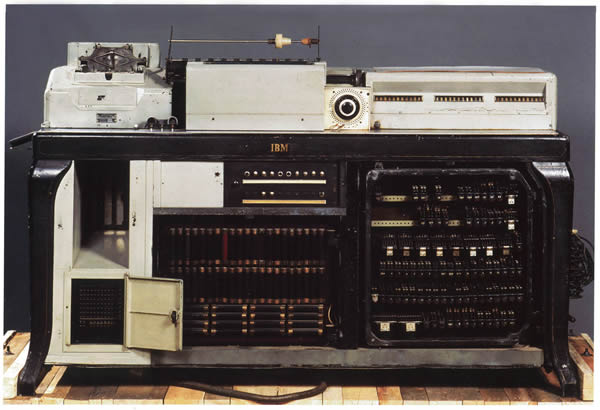|
#17 Race Categories and Hollerith Machines |
 |
For
data processing in the 1930s, the Hollerith machine was top of the line.
It was manufactured by the Deutsche Hollerith Maschinen Gesellschaft,
a subsidiary of IBM. By 1934 hundreds of employees of the Nazi government
were punching information about suspicious citizens
into Hollerith cards,
data on Jews, Gypsies, Freemasons, Jehovah Witnesses, intellectuals,
and the disabled. By 1939 racial labels were also entered in, since
such categories had been added to that year's national census. Three
years later the Hollerith database had become a major source for deportation
lists which, eventually for many German citizens, turned into a registry
for forced-labor assignments, transit ghettos, and death camps. The
Hollerith machine did not invent the rhetorical categories that were
fed into it, but arguably the language forms that emerged from it—statistical
data and ominously long lists of names, genealogies, and addresses—not
only logistically facilitated the genocide but discursively helped shape
it.
On racial categories as rhetorical, see M. Lynne Murphy, "Racial Labels in American Dictionaries," Dictionaries 11 (1991), 43-64; or Audrey P. Olmstead, "Words are Acts: Critical Race Theory as a Rhetorical Construct," Howard Journal of Communications 09 (1998), 323-31; or Peggy Pascoe's richly documented and award-winning article, "Miscegenation Law, Court Cases, and Ideologies of 'Race' in Twentieth-Century America," Journal of American History 83.1 (1996), 44-69. For an extensive historical account of IBM's involvement with the Hollerith machine and with Nazism, see Edwin Black, IBM and the Holocaust: The Strategic Alliance between Nazi Germany and America's Most Powerful Corporation (New York: Crown, 2001). The photograph was taken by Arnold Kramer of the United States Holocaust Memorial Museum and is reproduced here by the Museum's kind permission. RH, January 2004 |